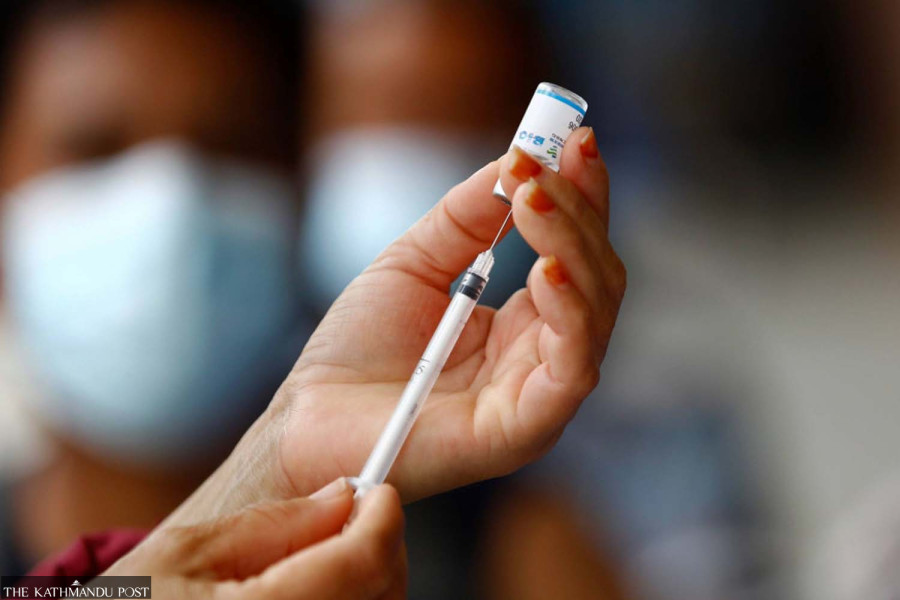Editorial
Jabs for children
The government should first be able to pinpoint the reasons for low immunisation coverage.
An increasing number of children’s lives are at risk. Around 24,000 of 600,000 babies born in Nepal every year do not get any immunisation. According to the Nepal Demographic Survey 2022 published by the Ministry of Health and Population, at least 4 percent of children aged 12-23 months have not received the shots mandated under Nepal’s National Immunisation Programme (NIP). The government provides 13 different types of vaccines to prevent diseases such as pneumonia, tuberculosis, tetanus, Hepatitis B, Japanese encephalitis, rotavirus, diphtheria, measles-rubella, polio, typhoid and whooping cough (pertussis), which are major causes of under-five child mortality.
Such diseases are preventable with access to simple and free-of-cost immunisation. Under the NIP’s “reaching every community” approach, the country made significant progress in containing these diseases in 2011, with an 87 percent vaccination rate. But the coverage decreased to 78 percent in 2016, before slightly rebounding to 80 percent in 2022. This year, the percentage of those who did not receive vaccinations increased from 1 percent in 2016 to 4 percent. Child health experts attribute low vaccination to various factors, including limited access to healthcare providers, floating population, scattered slums and lack of awareness. The Covid-19 pandemic made matters worse. According to them, government officials’ ineffective working style, the cumbersome vaccine bureaucracy, and failure to recognise the importance of immunisation could also have adversely affected vaccination.
A 2019 report on Factors Affecting Vaccination Coverage and Retention of Vaccination Cards in Nepal revealed that children born in health facilities had higher odds of vaccine coverage compared to those born elsewhere. Children with vaccine cards were more likely to get vaccines than those who didn’t. Similarly, children in rural areas had higher odds of having vaccination cards than those in urban areas. Further, children of educated parents were more likely to have retained their vaccination cards than children of uneducated parents.
Studies suggest socio-cultural and geographical disparities could also be responsible for low vaccine uptake. Although the country as a whole has been progressing, there are differences across caste, ethnic, gender, religious and geographical lines. It is possible that socio-cultural inequalities contributed to just 68 percent immunisation coverage in Madhesh province, the lowest in the country. That said, the vaccination picture is bleak even in major cities like Kathmandu and Lalitpur.
The Constitution of Nepal guarantees children’s right to health care. The Act Relating to Children 2018 states that “children shall have the right to get necessary vaccination to prevent diseases”. The loss of even one life from a disease that is preventable and controlled by immunisation is unacceptable. Immunisation decreases the risk of both mortality and morbidity.
To improve things, the government should first be able to pinpoint the reasons for low immunisation coverage; studies done abroad can only be rough guides. While there has been a lot of groundwork on bringing vaccines through foreign aid, the government hasn’t been able to make people aware of the importance of getting their children jabbed. This in turn calls for more emphasis on maternal education, parent literacy, and awareness programmes reminding households not to forget to get vaccination cards.
Vaccines have a long history of being the best method of preventing unnecessary deaths and debility from a multitude of diseases. To take just one example, thanks to steady immunisation, polio was eradicated in Nepal. But the horrendous disease can well make a comeback if immunisation coverage goes down, as we have already witnessed in Pakistan. It’s not a risk worth taking.




 17.12°C Kathmandu
17.12°C Kathmandu














